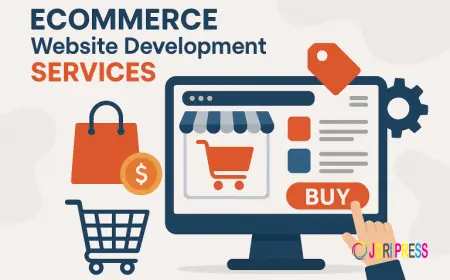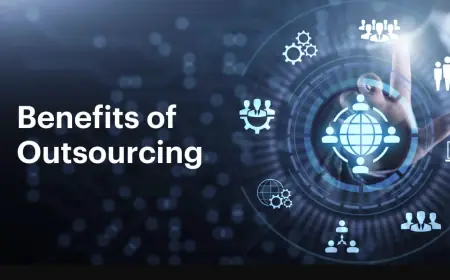How RAG Development Services Are Powering Smarter Enterprise AI in 2026
Discover how RAG Development Services empower enterprises in 2026 with reliable, context-aware AI. Learn how RAG boosts accuracy, trust, and business intelligence.

Introduction: The Next Evolution of Enterprise AI
Artificial intelligence is evolving faster than ever, but one of the biggest challenges enterprises still face is reliability. Traditional large language models (LLMs) are powerful, yet prone to “hallucinations” producing information that sounds right but isn’t factually correct.
That’s where RAG Development Services (Retrieval-Augmented Generation) are transforming the enterprise AI landscape in 2026. By combining information retrieval with generative capabilities, RAG systems allow AI models to access live, accurate data before generating answers.
In short, RAG bridges the gap between data and intelligence, enabling organizations to make more informed, contextually accurate, and actionable decisions.
What Is RAG (Retrieval-Augmented Generation)?
RAG is a hybrid AI architecture that enhances large language models by linking them to external knowledge sources such as databases, APIs, or documents.
Here’s how it works:
-
Retrieval: The model retrieves the most relevant data from trusted sources.
-
Augmentation: That data is fed into the generative model.
-
Generation: The model produces factually accurate and context-aware responses.
This combination makes RAG ideal for enterprise use cases where precision and traceability are essential such as finance, healthcare, legal, and customer service automation.
Why Enterprises Are Turning to RAG Development Services
By 2026, more than 65% of AI-driven enterprises are expected to implement some form of RAG-based architecture. The reason is clear data-driven reliability.
1. Reducing AI Hallucinations
RAG integrates verified data sources into the response generation process. It ensures that every output is grounded in factual content rather than probabilistic guesses.
2. Enabling Real-Time Knowledge Access
Enterprises can connect their RAG models with live databases, CRM systems, or ERP software to provide real-time insights. For instance, a financial institution can use RAG to generate up-to-date credit reports or loan recommendations.
3. Simplifying Domain Adaptation
Traditional LLMs require costly fine-tuning for each domain. RAG Development Services, however, let businesses add or update their data repositories without retraining entire models.
4. Boosting Trust and Compliance
RAG offers source transparency, which is critical for sectors like banking or healthcare. Each AI response can be traced back to its data origin, helping with compliance under frameworks such as GDPR and HIPAA.
Core Components of RAG Development Services
Building a high-performing RAG system involves multiple integrated components. Leading RAG development companies typically include the following:
1. Data Pipeline Engineering
Data engineers design ingestion pipelines that collect, clean, and index organizational data for retrieval.
2. Vector Database Integration
Databases like Pinecone, Weaviate, or FAISS are used to store embeddings that make semantic search possible.
3. Retrieval System
The retriever fetches the most relevant data chunks based on user queries.
4. LLM Integration
An LLM (like GPT, Claude, or LLaMA) is used for natural-language generation. The retriever’s output is passed to it as context.
5. API & Frontend Layer
This is where the RAG model is connected to your existing systems dashboards, chatbots, CRMs, or analytics tools.
Key Enterprise Use Cases for RAG Development Services
1. Knowledge Management and Documentation
Enterprises can deploy RAG systems to index internal policies, manuals, and records, enabling employees to get instant, verified answers.
2. AI-Powered Customer Support
RAG-enhanced chatbots can access CRM and support ticket data to deliver personalized, accurate customer responses without hallucinating.
3. Financial & Risk Analysis
Banks and fintechs use RAG to analyze customer portfolios, market reports, and compliance data, improving risk scoring and investment insights.
4. Healthcare & Life Sciences
RAG helps healthcare professionals extract evidence-based insights from medical databases and research literature while ensuring patient data confidentiality.
5. Legal & Regulatory Applications
Law firms and compliance teams use RAG to summarize case laws, interpret regulations, and generate compliant reports with traceable citations.
Top Technologies Driving RAG Development in 2026
RAG systems depend on a combination of cutting-edge technologies. The latest RAG Development Services use:
-
Large Language Models (LLMs): GPT-4 Turbo, Claude 3, Gemini, or open-source models like LLaMA 3.
-
Vector Databases: Pinecone, Milvus, ChromaDB.
-
Embedding Models: OpenAI’s text-embedding-ada-002 or HuggingFace sentence transformers.
-
MLOps Platforms: MLflow, Kubeflow, Vertex AI for versioning and model orchestration.
-
Cloud AI Services: AWS Sagemaker, Azure Machine Learning, and GCP AI Studio.
Benefits of Partnering with a Professional RAG Development Service Provider
1. End-to-End Expertise
A reliable RAG development company handles everything from architecture design and model integration to post-deployment optimization.
2. Customization for Your Data Ecosystem
Unlike off-the-shelf tools, custom RAG development adapts models to your internal data structure, ensuring better contextual accuracy.
3. Cost Efficiency
Instead of retraining massive LLMs, RAG leverages existing models with smart retrieval reducing infrastructure costs by up to 60%.
4. Ongoing Optimization
Continuous retraining and index updates ensure your RAG system stays aligned with business and data evolution.
Challenges in RAG Development (and How to Overcome Them)
While RAG is powerful, it’s not plug-and-play. Some common challenges include:
-
Data Quality: Poor or unstructured data reduces accuracy.
-
Latency Issues: Large datasets can slow retrieval; vector compression helps.
-
Security Risks: Sensitive data must be encrypted and access-controlled.
-
Maintenance: Continuous evaluation of embeddings and retrieval performance is needed.
Partnering with a seasoned RAG Development Services provider ensures these hurdles are managed with best practices in MLOps, DevSecOps, and cloud scaling.
How RAG Complements Agentic AI and Generative Workflows
2026 is witnessing the fusion of RAG and AI agents. Agents use RAG pipelines to fetch relevant data autonomously before making decisions or generating responses.
For example, an enterprise AI chatbot integrated with RAG can dynamically access internal sales data, compliance documents, or CRM insights improving both customer engagement and decision-making.
The Future of RAG Development Services
As enterprises move from generative to intelligent automation, RAG will remain a foundation for trustworthy, explainable AI systems.
In the next few years, we’ll see:
-
Seamless RAG integration with AI Agents and Cognitive Workflows.
-
Multi-RAG pipelines connecting structured + unstructured data.
-
Real-time enterprise AI ecosystems powered by continuous retrieval.
RAG isn’t just a trend it’s a core capability for every future-ready business.
Conclusion
RAG Development Services have become the backbone of enterprise-grade AI in 2026. They empower organizations to transform static data into actionable knowledge while minimizing hallucinations and maximizing reliability.
As businesses scale their AI ecosystems, those who invest in robust RAG architectures today will lead the next era of intelligent, context-aware enterprise automation.
What's Your Reaction?
 Like
0
Like
0
 Dislike
0
Dislike
0
 Love
0
Love
0
 Funny
0
Funny
0
 Angry
0
Angry
0
 Sad
0
Sad
0
 Wow
0
Wow
0

















































